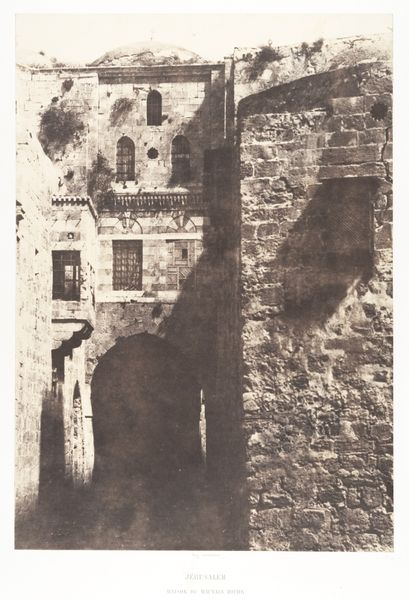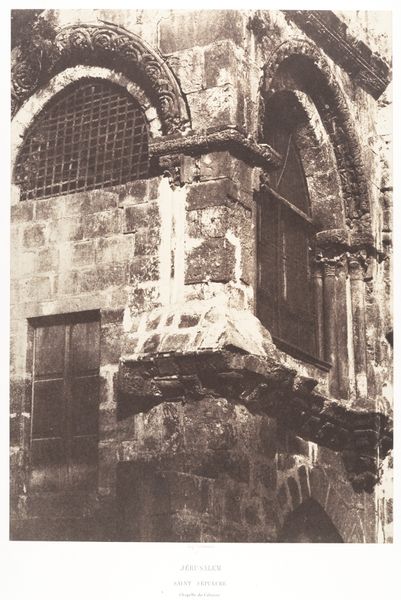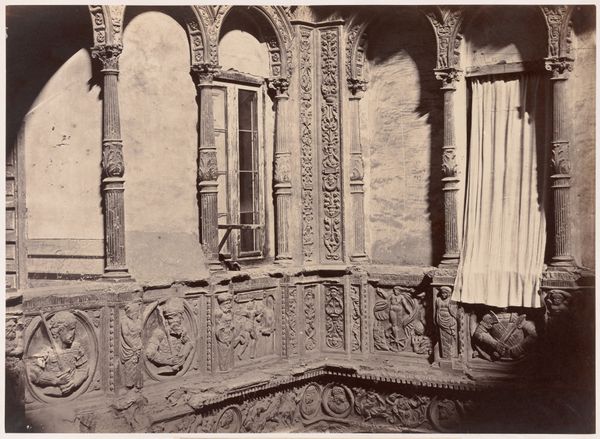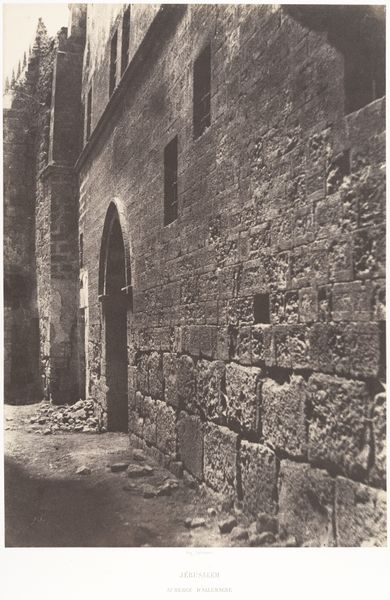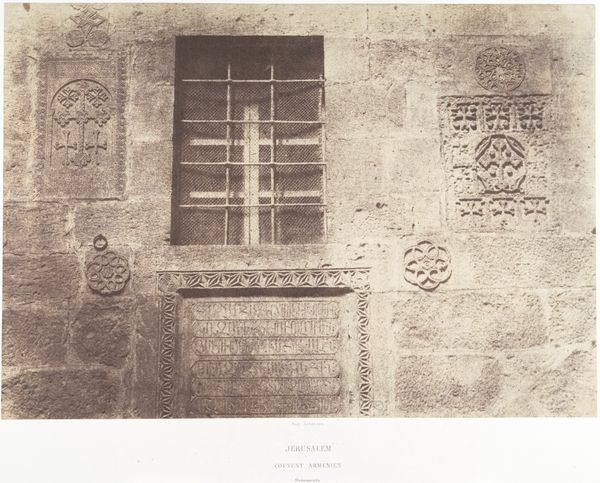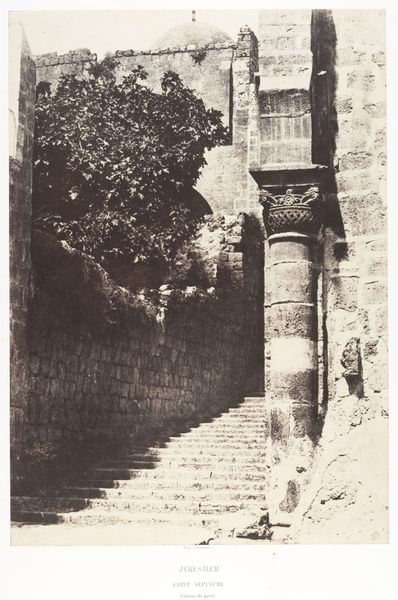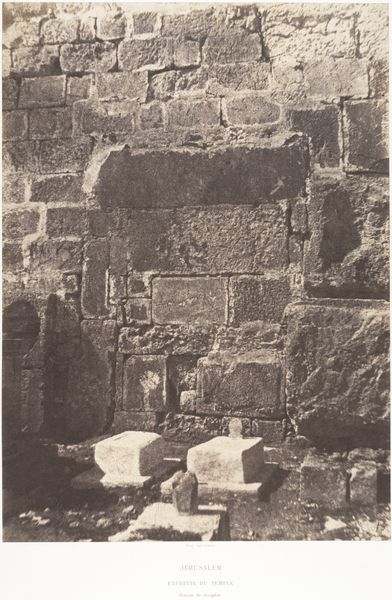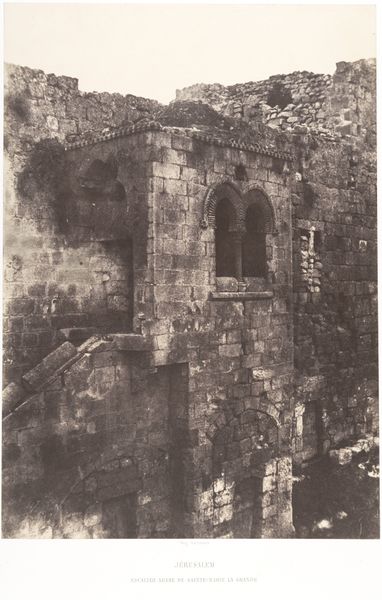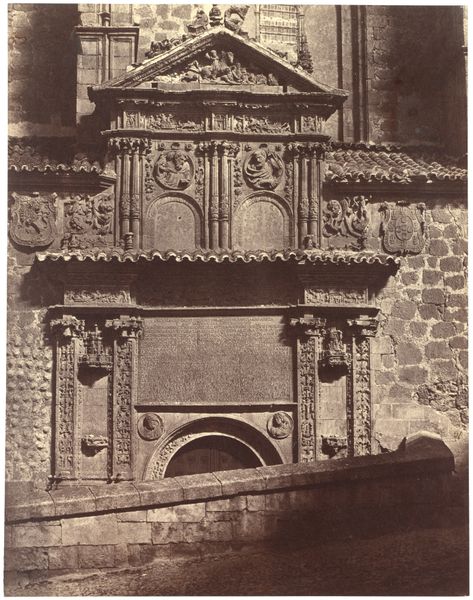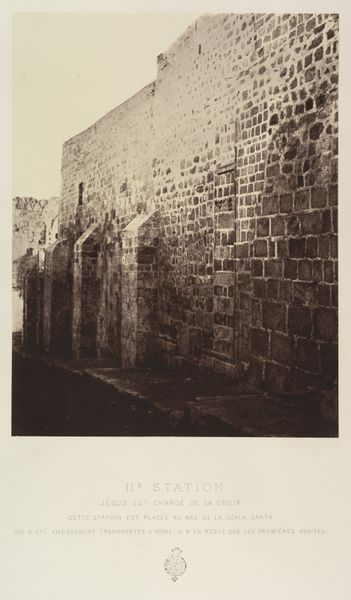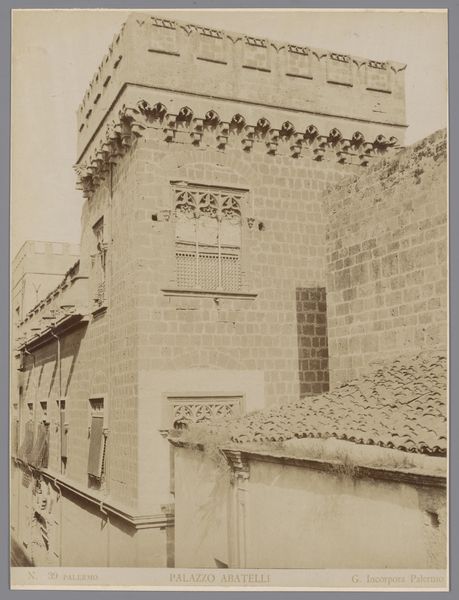
Jérusalem, Couvent Arménien, Ornements, 1 1854 - 1859
0:00
0:00
daguerreotype, photography, architecture
#
landscape
#
daguerreotype
#
photography
#
arch
#
orientalism
#
islamic-art
#
architecture
Dimensions: Image: 31 x 22.9 cm (12 3/16 x 9 in.) Mount: 59.9 x 44.8 cm (23 9/16 x 17 5/8 in.)
Copyright: Public Domain
Curator: My breath catches a little when I see this, there’s a certain weight to it, both literal and figurative. Editor: And that’s likely by design. Here we’re looking at Auguste Salzmann's "Jérusalem, Couvent Arménien, Ornements, 1," a daguerreotype made between 1854 and 1859, now housed here at the Met. Curator: The texture! It's all blocks and sharp angles, offset by these soft shadows…it almost feels more sculptural than photographic. It’s like feeling history instead of just seeing it. Editor: Exactly. Salzmann, you see, was commissioned to document biblical sites, framing them—literally and figuratively—within the politics of religious heritage and archaeology. This isn’t just a picture of a wall; it’s a statement about presence and power. Curator: Power is a strong word. But you're right. Even in this still, silent image, there's a kind of assertion. The detail on those carved panels next to the window is gorgeous, but also kind of…imposing. Do you feel that? Editor: Oh, absolutely. Salzmann was very careful about what he chose to emphasize. Notice the stark contrast between the sunlit stones and the darkened interior behind the screened window, it makes that little bit of interior space feel unknowable. Curator: Like secrets hidden within the stone itself. I get a very contemplative vibe from it. All those carefully placed stones. Who touched them? What did they see? Editor: It also prompts questions of authenticity and representation. To what extent does Salzmann's gaze shape our understanding of Jerusalem? This was created during a period of intense European interest in the “Orient," what did they want to see? Curator: So, this image is almost a mirror reflecting the colonial gaze back at itself. Powerful. And more than a little unsettling, now that I think of it. Editor: Art always is. Or, at least, it should be. I think that looking closely at images like this—and being a bit unsettled—helps us examine what is recorded in visual culture. Curator: This one has layers, doesn't it? More than stone, anyway. I definitely feel changed. Editor: And perhaps that is how we measure the value of witnessing history. Thank you for joining me on this encounter.
Comments
No comments
Be the first to comment and join the conversation on the ultimate creative platform.
